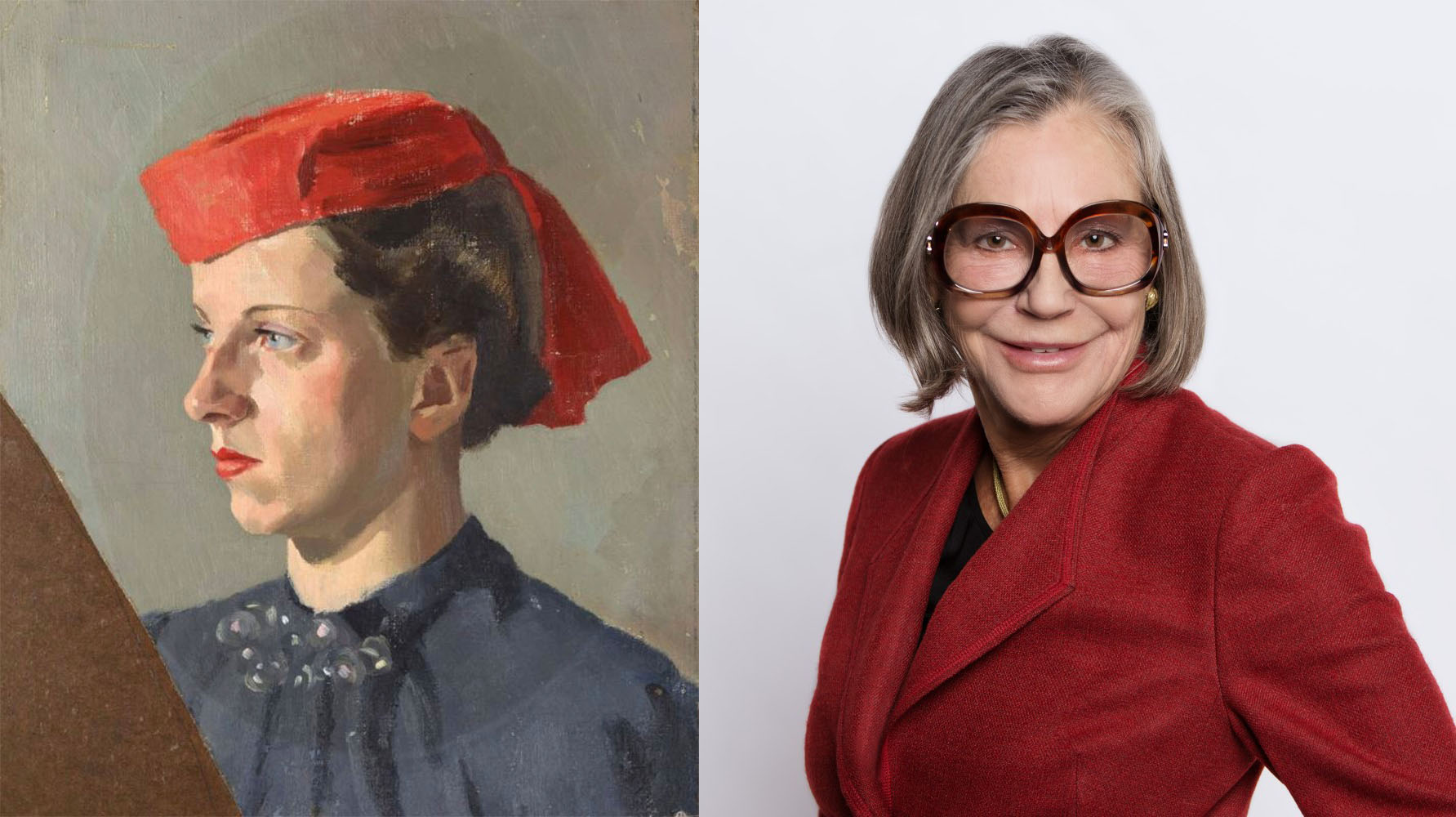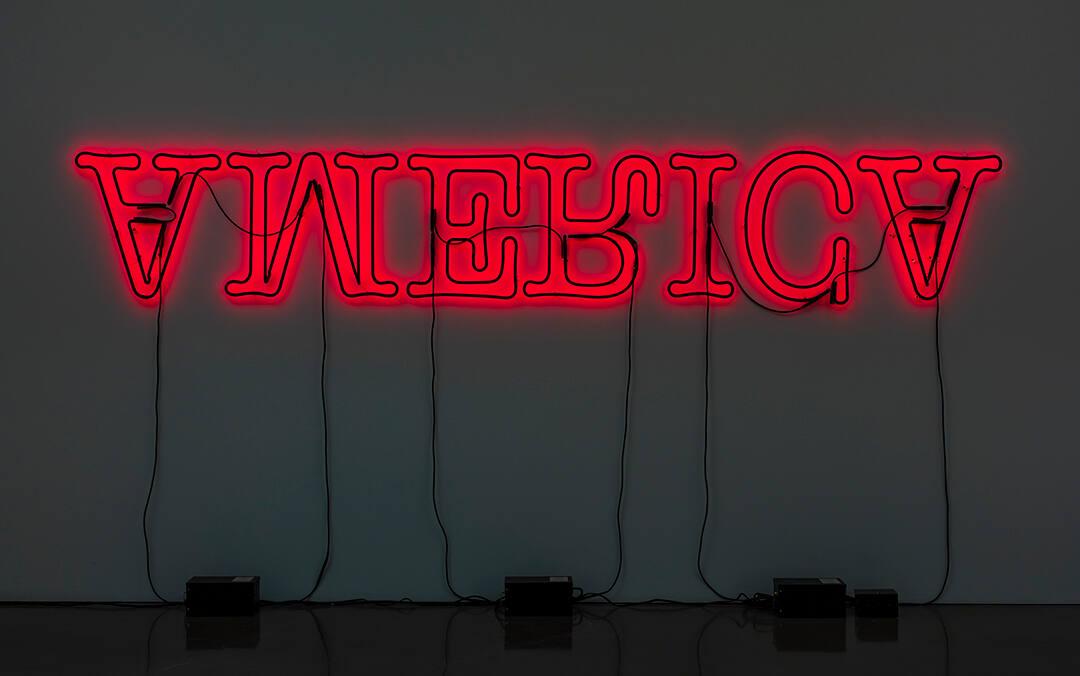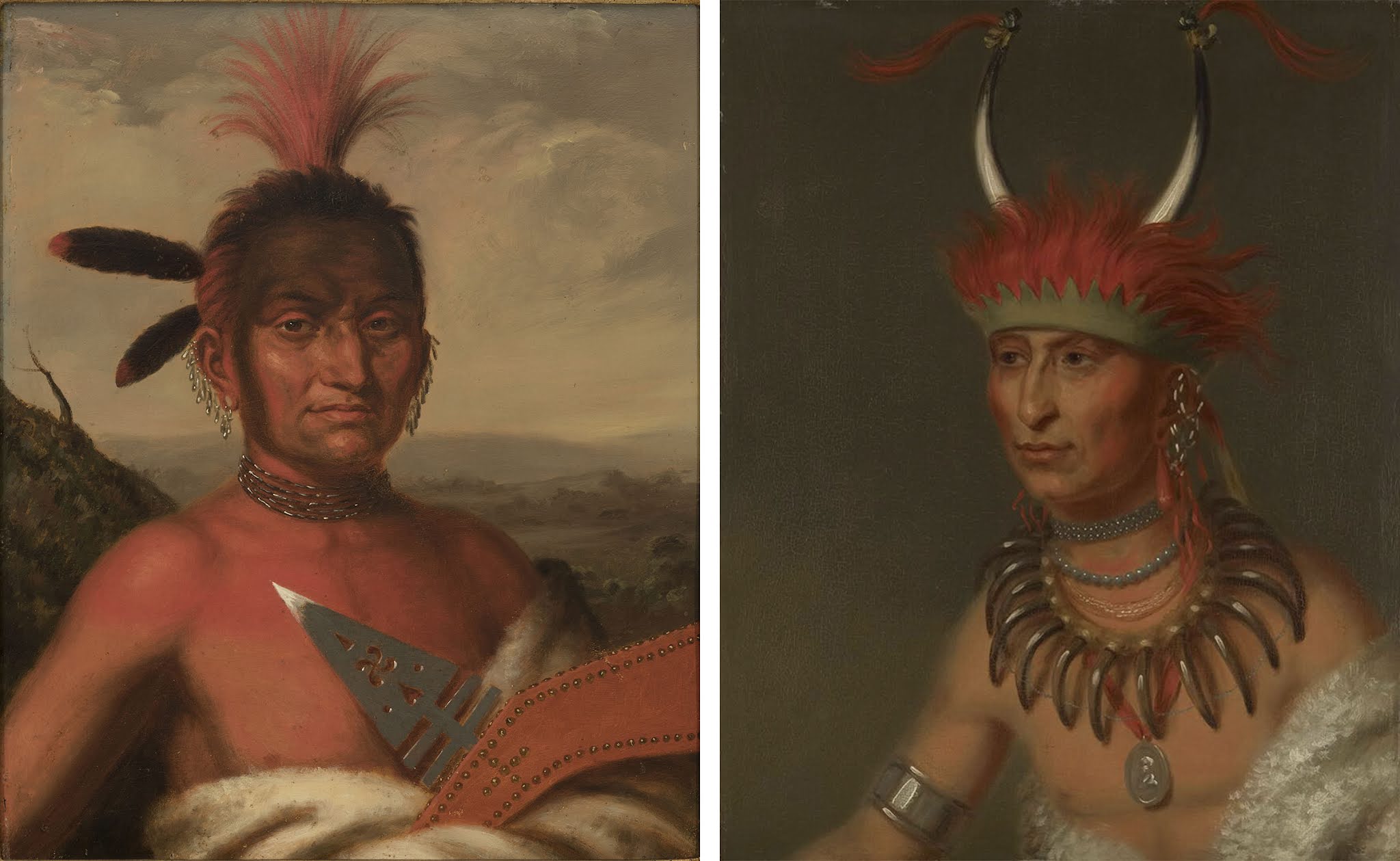 |
| Virginia Steele Scott and Alice Walton (Jonathan Scott's Virginia with Red Hat, no date (Huntington); release photo of Alice Walton) |
2021 was one of the Huntington's best years ever for acquisitions of American art. Adding defining pieces by Thomas Cole (funded by a new partnership with the Ahmanson Foundation) and Kehinde Wiley (commissioned to complement/complicate Blue Boy), the Huntington has—at least for one pandemic-challenged year—surpassed even Alice Walton's Crystal Bridges as an institutional buyer of American art.
The Huntington entered the American art field late, with the 1984 opening of the Virginia Steele Scott Galleries of American Art. Scott was a Pasadena collector and patron, though hardly of national renown or Walton wealth. Her eponymous galleries at the Huntington initially showed a 50-piece collection of American paintings, from the 1700s to about 1930, that had been assembled after Scott's death from liquidation of her own spotty collection. At the time the Scott Galleries seemed the Last Great American Wing. It was hard to imagine another brand-new museum assembling a chronological survey of American art.
Alice Walton proved that wrong. At its 2011 opening, the Walmart heir's Crystal Bridges Museum of American Art was pegged as the Getty of American art. It was feared that Crystal Bridges would scoop up the best American art that came to market, shipping it off to the Arkansas boondocks.
East Coast museum folk complained that Walton's wealth was vacuuming rarely-seen masterworks from underfunded libraries and universities in the northeast. On the West Coast, late to collecting, the concern was that Crystal Bridges would pre-empt whatever few remaining opportunities might turn up.
 |
| Glenn Ligon, Untitled (America), 2018. Crystal Bridges Museum of American Art |
In the past decade, Crystal Bridges has made great strides, though other museums haven't been shut out of the market. Both Crystal Bridges and the Huntington initially avoided contemporary art. This has become a main focus of Crystal Bridges' recent acquisitions and an important one for the Huntington. In 2021,
Crystal Bridges added an astute selection of pieces by Glenn Ligon (the 2018 neon work
Untitled [America]), Beth Lipman, Meleko Mokgosi, and Catherine Opie. There was however little older art: a Kahlo-esque self-portrait by Azusa-born surrealist Rosa Rolanda (1939) and, from the 19th century, a large stoneware jar by enslaved potter/poet David Drake.
 |
| Thomas Cole, Portage Falls on the Genesee, about 1839 (Huntington) and View of Mount Etna, 1842 (Crystal Bridges) |
In 2021, the Huntington managed to add
three important 19th century paintings. Foremost is Thomas Cole's
Portage Falls on the Genesee, the first Ahmanson-funded buy.
Portage Falls is a big statement about the American landscape by the founder of the Hudson River School at the peak of his career. As such it fills a major gap in the collection. The painting had long been in the Seward House, a small upstate New York house museum, owned by a foundation that sold it to raise funds to support the museum. It's the the sort of prize that Crystal Bridges has often pursued.
Crystal Bridges has three Cole paintings. That may seem plenty, yet none are as important as Portage Falls. Perhaps the most notable is View of Mount Etna, a sublime Italian landscape. But Cole is prized above all for his ability to use American landscapes to pose Barbara Kruger questions about history, the natural world, and manifest destiny. Portage Falls does just that (and is considerably larger than any of the Crystal Bridges Coles). That Ahmanson-Huntington prevailed over Walton-Crystal Bridges demonstrates savvy as well as bankroll.
 |
| Charles Bird King, Moanahonga (Great Walker), An Ioway Chief, about 1824 (Huntington) and Shaumonekusse, Oto Half Chief, about 1822 (Crystal Bridges) |
The new focus on the Huntington's American collection goes beyond one big-money supporter. This year the Huntington also acquired one of Charles Bird King's group of portraits of Indigenous leaders. Commissioned by Congress, most of the portraits were lost in an 1865 fire at the Smithsonian Institution. Outside of DC, museums more often display copies of King's paintings made by Henry Inman. (
LACMA has an Inman copy, along with
a preparatory drawing by King.)
King kept Moanahonga in his personal collection. He bequeathed it as part of a group of 20 portraits to the Redwood Library in Newport, RI. There it remained for a century, until the library sold the King paintings in 1970.
King's Moanahonga is (again) the Huntington's first painting by the artist, while Crystal Bridges has three. Two of the three are of Native Americans; the more engaging is of Shaumonekusse. But the Huntington painting is a more convincing study of character, set against a somber Romantic landscape. The land is very much the point. These paintings were part of a program to legitimize the seizure of Indigenous territory. Only a few of King's portraits show landscape backgrounds. Neither of the Crystal Bridges portraits do.
 |
| Lockwood de Forest, Bank of the Nile Opposite Cairo, Egypt, 1879–86 (Huntington) |
The Huntington bought an Egyptian landscape by Lockwood de Forest. Shown in its original teak frame, carved in India, it's a fever dream of Gilded Age Orientalism, colonialism, aestheticism, and photorealism. Crystal Bridges has nothing by the artist.
 |
| Kehinde Wiley, A Portrait of a Young Gentleman, 2021 (Huntington) and Portrait of a Florentine Nobleman, 2018 (Crystal Bridges) (c) Kehinde Wiley |
Cole notwithstanding, the most Instagrammed Huntington painting of 2021 must be Kehinde Wiley's A Portrait of a Young Gentleman. It was commissioned to mark the 100th anniversary of Henry's Huntington's purchase of Thomas Gainsborough's Blue Boy. Such institutional prerogatives are not generally the best way to sponsor new art, but this case seems an exception. Wiley credits childhood visits to the Huntington as influential in his decision to become an artist. The standing sitter is one of Wiley's best realized, but no less important is the electric ground, rooted in William Morris, 60s San Francisco psychedelia, and maybe even the crypto-feline abstractions of Louis Wain (Wain called them wallpaper patterns).
Crystal Bridges also has a Wiley, Portrait of a Florentine Nobleman, and it too was a museum commission. After the 2014 Ferguson uprising, the Saint Louis Art Museum asked Wiley to depict local Black residents. SLAM bought one painting, and Crystal Bridges another. The pose of the Bentonville portrait is based on SLAM's notoriously akimbo portrait by Francesco Salviati. Still, the Huntington painting is the standout.
These days it often takes half a dozen museum supporters to fund a major art acquisition. The King, de Forest, and Wiley paintings are credited to non-overlapping groups of individuals, funds, trusts, and foundations. This suggests that the Huntington has a back bench of support in addition to the new Ahmanson partnership.
Crystal Bridges is much bigger than the Huntington's American galleries, and it has about twice as many American paintings. Bentonville's quantity advantage is not likely to change anytime soon. But if 2021 is any indication, it may have a real rival for quality going forward.






Comments
In past years, there were less prominent supporters of the arts, people similar to Anna Bing Arnold or Camilla Chandler Frost.
Too bad LA no longer has a publicly run and operated institution where such people can express their interest and generosity.
2022 has become almost like pre-1965.
It took the Ahmanson Foundation 40 years to donate $100 million to LACMA. ($100 million for a bunch of works by secondary artists.)
In 2017, David Geffen (by himself) donated $150 million for LACMA's new building.
I'm glad that at LACMA David Geffen's name will replace the Ahmanson name, a name associated with Christian nationalism and homophobia.
Oh, you mean that hole in the ground that will be drowning in red ink for decades?
Oh-kay.
LA museums were not well positioned (e.g., the Yale Art Gallery) and/or well connected (e.g., the Met).
Even post-WWII, there are some missing pieces. Does any LA museum have an Edward Hopper painting?
Of course, the Ahmanson Foundation is too cheap and conservative to buy a Hopper painting for LA.
The construction loan will be paid off by the pledges. That's how it works.
... But hey, believe whatever you want --- from Trump's big lie, to QAnon, to the Save-LACMA mob. It's all the same.
The writer,above, holds great European baroque masterpieces in no esteem.
> second rate works at LACMA.
Which is why throwing big money at a concrete overpass makes a lot of sense.
Incidentally, I've heard that LACMA is now being managed behind the scenes by President Joe Biden. So no need to worry.
If yes, I find no joy in engaging with someone whose view bears witness to a thorough misunderstanding of western art history.
What can I say? ... I find joy in engaging with phonies and aesthetes who say things like "bears witness to a thorough misunderstanding of western art history."
But hey, prove me wrong. What credentials do you have to tell anyone that they have a "misunderstanding of western art history"?
I dropped the Y-card above. Previously, I have also indicated that I collect contemporary art (i.e., Jonas Wood, Alex da Corte, and others). Moreover, in response to your exaggerated opinion that Rubens is the definitive Baroque artist, I have demonstrated some knowledge of the work of Foucault and Deleuze on the subject of the Baroque.
Now, what do you have to show for yourself?
... I will make sure to check back. I like a good laugh.
It does not have any of the narrative possibilities and angst of his truly "superb" paintings. See Yale's Rooms by the Sea, Western Motel, and Sun Light in a Cafeteria.
Granted, I am partial to the Yale paintings. ;)
Don't pay any attention to me, as I certainly won't you.
As far as LACMA having a better American art collection? Eh, unless we're talking post WWII, there are more interesting and crowd-drawing departments that LACMA should be focusing on.